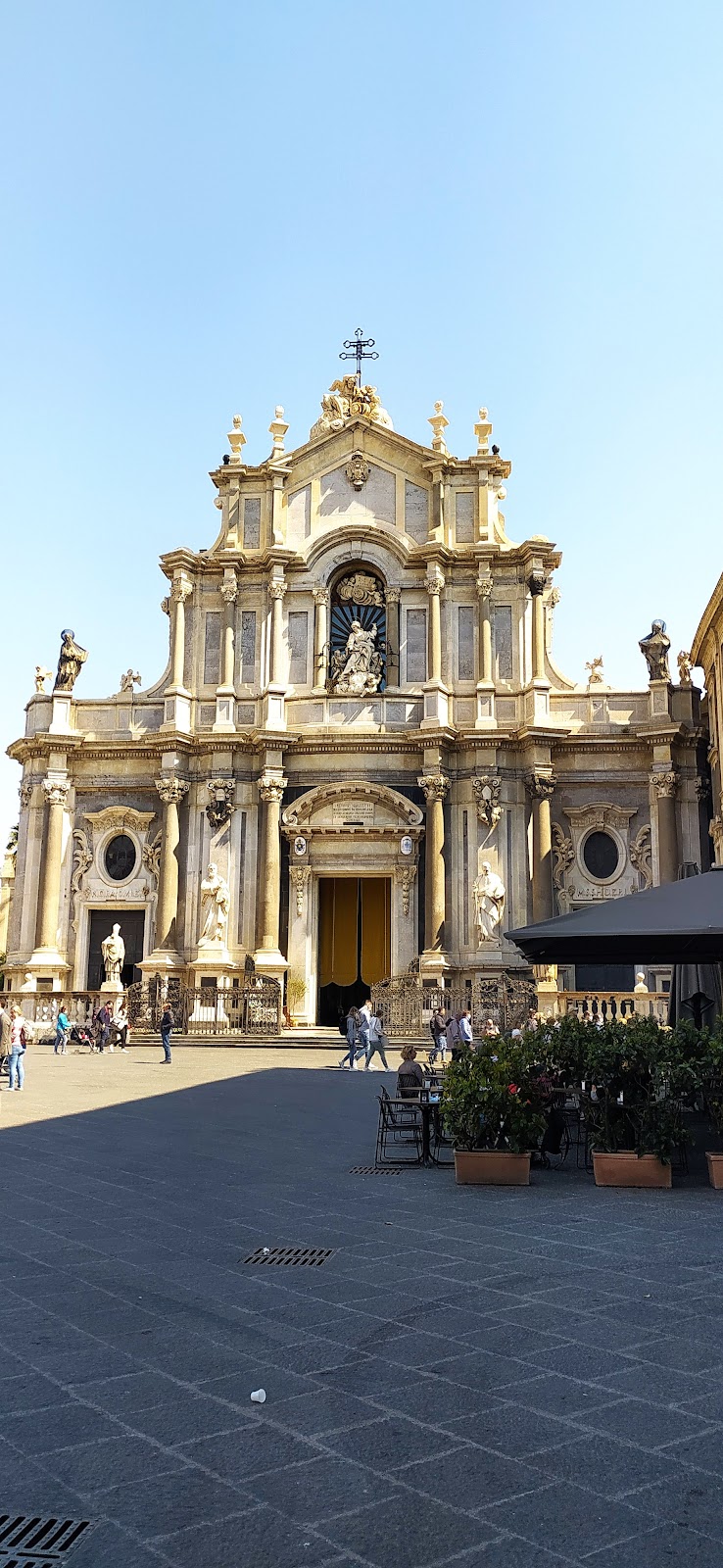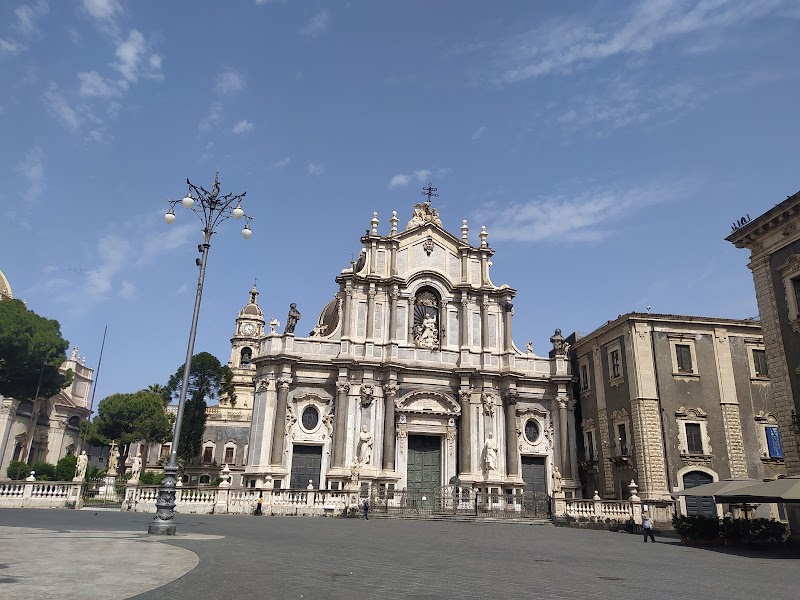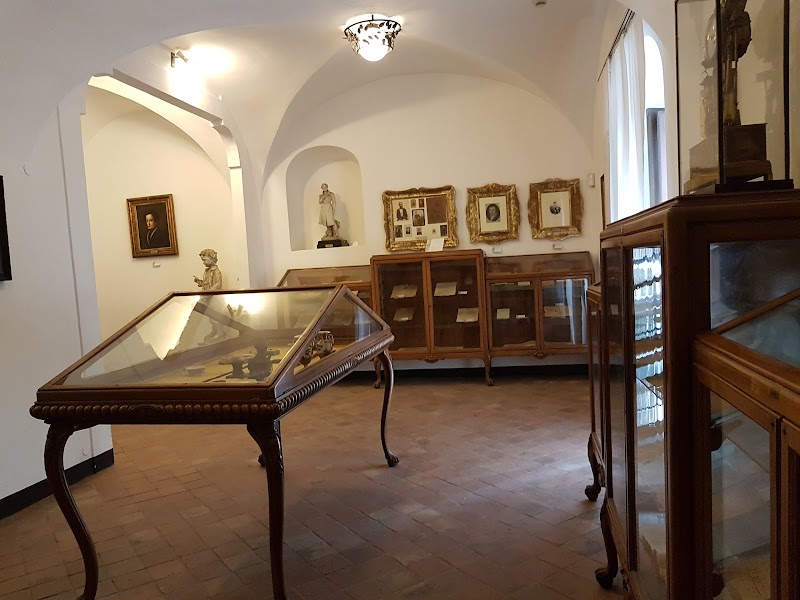Home to just over 300,000 inhabitants, the bustling city of Catania, the second-largest city in Sicily, is a breathtaking blend of ancient ruins, baroque architecture, and dynamic street life. The city's captivating charm is derived from its UNESCO-listed historic center, the mesmerizing Catania Fish Market, and the awe-inspiring Mount Etna, the highest active volcano in Europe.
In preparation for your visit, a Catania tourist map is an ideal tool to navigate this dynamic city. It will be your guide, leading you through the labyrinth of history, culture, and gastronomy which Catania provides. With each street and square teeming with stories to tell, this map will reveal the city's deep-seated heritage at your own leisure. For a more detailed overview of Sicily, consider visiting the tourist map of Sicily as well.
" Booking.comEmbarking on a Journey through Catania: Top Attractions
Nestled at the foot of Mount Etna, the lively city of Catania is a sensory delight. The appeal of this Sicilian jewel is not only in its rich history and breathtaking architecture, but also in its dynamic street life, captivating cultural scene, and an assortment of unique experiences that await discovery. Here, we've meticulously chosen some of the city's foremost attractions that should unquestionably feature on your itinerary. If you are planning to explore more of Sicily, you should consider using a tourist map of Palermo.
- Teatro Massimo Bellini
- Elephant Fountain (Fontana dell'Elefante)
- Ursino Castle (Castello Ursino)
- Monastery of San Nicolò l'Arena
- Via Etnea
- Giardino Bellini
The Nucleus of Catania: Teatro Massimo Bellini
Centrally located in Catania, the Teatro Massimo Bellini is more than just a theatre; it's an architectural marvel that pays tribute to the city's rich cultural legacy. The theatre, named after the city's celebrated son and composer Vincenzo Bellini, showcases the crème de la crème of Sicilian opera and music. Its lavish interiors and remarkable acoustics make each performance unforgettable. The Teatro Massimo Bellini stands out for its lively ambiance, which encapsulates the spirit and passion of the people of Catania.
Historic Allure: Elephant Fountain and Ursino Castle
As you wander through the Piazza Duomo, the Elephant Fountain (Fontana dell'Elefante), Catania's cherished symbol, greets you with its distinctive charm. Built in 1736, this iconic monument features an ancient lava stone elephant bearing an Egyptian obelisk, a testament to the city's resilience and survival throughout the centuries. A short distance away is the Ursino Castle, a remarkable 13th-century fortress that now serves as a fascinating museum. Its magnificent display of art and artifacts offers a profound insight into the city's dynamic history.
Sacred Heritage: Monastery of San Nicolò l'Arena
Another must-visit spot in Catania is the Monastery of San Nicolò l'Arena, one of the largest monastic complexes in Europe. This UNESCO World Heritage site is a splendid blend of varying architectural styles, ranging from the austere Norman designs to the elaborate Baroque embellishments, reflecting the manifold influences that have shaped Catania over the eras. Its grandeur and serene ambiance make it an oasis for history and architecture enthusiasts alike.
Contemporary Catania: Via Etnea and Giardino Bellini
For a flavor of modern Catania, embark on a leisurely walk down Via Etnea, the city's main shopping street. With its trendy boutiques, charming cafes, and bustling street life, Via Etnea is the ideal location to immerse yourself in the city's contemporary rhythm. Close by, Giardino Bellini, the city's oldest and most picturesque park, provides a tranquil refuge from the hustle and bustle. Its lush landscapes and stunning views of Mount Etna make Giardino Bellini a perfect spot for a leisurely picnic or a serene evening walk. If you are planning a tour of Italy, be sure to check out a tourist map of Italy.

Essential Information for Navigating Catania
Transportation and Mobility
Getting around Catania is relatively simple due to its compact size and efficient public transportation system. The AMT (Azienda Metropolitana Trasporti) manages buses and the singular metro line in the city. The buses operate from 5:00 AM to midnight, with tickets costing €1.00 for 90 minutes of use. These can be purchased at kiosks, tobacconists, or directly from the driver. If you wish to explore the city by bike, there are several bike rental services available, with prices beginning at €10 per day. However, be prepared for the city's hilly terrain! If you are planning to explore more of Sicily, consider using a tourist map of Taormina.
Schedules and Prices
Most museums and attractions in Catania are open from 9:00 AM to 7:00 PM, with some closing for lunch between 1:00 PM and 3:00 PM. It's always wise to check the official websites of the attractions for the most updated information. The average entrance fee for most museums is around €8-€10.
Remember, every first Sunday of the month, many museums and archaeological sites offer free entrance. This is a fantastic opportunity to explore the city's rich cultural heritage without spending too much.
Safety Tips
While Catania is generally safe, like any other city, it has its share of petty crime. Be vigilant about your belongings, especially in crowded areas like the Catania Fish Market or public transportation. It's advisable to avoid dimly lit and deserted areas late at night.
Practical Recommendations
The best time to visit Catania is from April to June and from September to November. During these periods, the weather is pleasant, and the city is less crowded. If you're planning to visit Mount Etna, it's recommended to go in the morning, when the volcano is often clearer.
Dining out in Catania is generally affordable, with a meal at a mid-range restaurant costing about €15-€20 per person. For a truly local experience, try a traditional "tavola calda" (hot table) where mouthwatering Sicilian dishes are served at budget-friendly prices.
A final handy tip: always carry cash, as not all places accept credit cards, particularly smaller establishments and market stalls.

Frequently Asked Questions about Catania
1. Are there any unique local festivals in Catania that I can experience?
Yes, one of the most significant local events is the Feast of Saint Agatha, Catania's patron saint. This religious festival takes place annually on February 3rd to 5th, and August 17th. It is one of the most attended religious events in the world, with thousands of locals and tourists participating in the procession. The city streets fill up with people, lights, and colors in a vibrant celebration of faith and tradition.
2. What are some less-known but unique places to explore in Catania?
The Botanical Garden of Catania, or "Orto Botanico", is a hidden gem. This oasis of peace and natural beauty in the heart of the city offers a large variety of plants, trees, and a fascinating Palaeobotany Museum. Another lesser-known spot is the Church of the Badia di Sant'Agata, offering an incredible panoramic view of the city from its dome.
3. How can I make the most of my visit to Mount Etna?
For a truly unforgettable experience, plan your visit to Mount Etna for the early morning or late afternoon. This way, you can witness the spectacular sunrise or sunset over this majestic volcano. Furthermore, consider hiring a local guide to learn more about the volcano's geology and history, and to navigate the trails safely.
4. I'm a foodie. Are there any unique culinary experiences in Catania?
Absolutely! Try a traditional Sicilian cooking class to immerse yourself in the rich culinary heritage of Catania. Learn to prepare dishes like "Pasta alla Norma" or "Cannoli". Additionally, consider visiting a local winery for a tasting session; the region around Catania is known for its exceptional wines, especially those produced on the slopes of Mount Etna.
5. What kind of souvenirs can I bring back from Catania?
Local ceramics, handmade jewelry, and traditional Sicilian marionettes make great souvenirs. You might also want to bring home some of the local delicacies, such as almond pastries, pistachio cream, or a bottle of Etna wine. Remember, these items not only serve as reminders of your trip but also help support local artisans and businesses.
6. Are there any local traditions or customs I should be aware of?
In Catania, as in much of Italy, the siesta is a deeply-rooted tradition. Many shops and businesses close in the afternoon, typically between 1:30 pm and 4:30 pm. Plan your schedule accordingly to avoid disappointment. Also, Catanians are known for their warm hospitality, so don't hesitate to interact with the locals!


